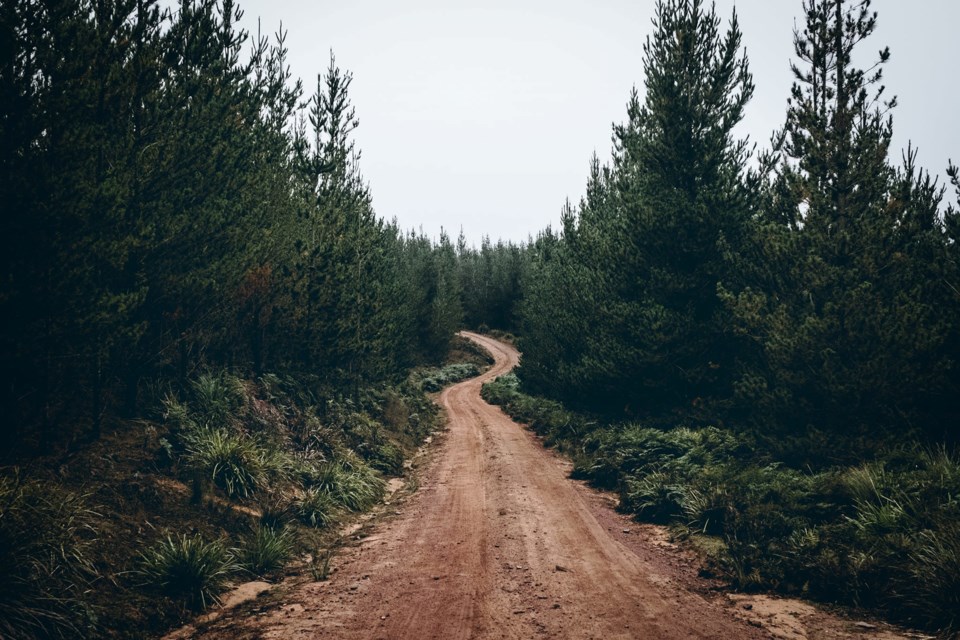Construction hasn’t started on the road to the Ring of Fire, but the Ontario government promises the environmental assessment process is well underway.
The provincial government and two remote First Nations near the remote mineral belt are calling the filing of the terms of reference of the Northern Road Link a “historic milestone to unlocking jobs and economic opportunities in the Ring of Fire region.”
The Northern Road Link would link two proposed roads, the 200-kilometre Marten Falls to Aroland Community Access Road at the south end, and the proposed 110-kilometre Webequie Supply Road to the Ring of Fire at the north end.
Premier Doug Ford and Northern Development Minister Greg Rickford delivered the news on April 14. They were joined by Chief Bruce Achneepineskum of Marten Falls and Chief Cornelius Wabasse of Webequie.
The two communities are leading the planning of the Northern Road Link (NRL) project to reach the valuable and untapped deposits and minerals in the Ring of Fire, 500 kilometres northeast of Thunder Bay. The Ring of Fire contains many of the raw materials needed in electric vehicle manufacturing and the clean-tech economy.
The road network will also connect the isolated First Nation communities of Marten Falls and Webequie to the Ontario road network for the first time.
In an environmental assessment, the terms of reference sets out the framework for the planning and decision-making process to be followed by the proponent — in this case, Marten Falls and Webequie — during the preparation of an environmental assessment (EA).
The filing of the terms of reference means the actual work of the EA can begin.
By way of a road and mine-building timetable, Noront Resources — now owned by Wyloo Metals — has regularly posted a project timetable for its Eagle’s Nest nickel project in the Ring of Fire.
It shows the start of construction of a north-south road in the middle of next year with the completion by mid-2027. The start of commercial production at the Eagle’s Nest nickel mine at the end of 2027.
Want to read more mining news from the North? Subscribe to our newsletter.
Ontario has said for years it will commit close to $1 billion to support infrastructure in the planning and construction of an all‐season road network, with investments in high-speed internet, road upgrades and other community supports.
According to an Infrastructure Canada document from 2019, obtained by Northern Ontario Business, the cost of building 450 kilometres of new road and to upgrade 97 kilometres of existing forestry road, in four sections, would be in the range of $1.1 billion to $1.6 billion.
The province is still waiting on Ottawa for a “suggested” federal contribution of between $577 million to $779 million.
“Our government is connecting industries, resources and workers in the North to the auto and EV battery manufacturers in the south so we can unlock the full economic potential of Northern Ontario,” Ford said.
“Today is a landmark day as we work side by side with our Indigenous partners to ensure that communities around the Ring of Fire have access to the roads needed to not only support development but also improve access to everyday essentials like fuel, groceries and health care. We’re getting it done.”
“Our government is committed to partnerships with First Nations communities to build legacy infrastructure projects that will become the Corridor to Prosperity,” Rickford said. “Marten Falls and Webequie First Nations are leading the environmental assessments because they share a strong vision for sustainable development and prosperity for their communities."
“Our partnership sets a new precedence in the region on Indigenous proponency,” said Marten Falls Chief Bruce Achneepineskum.
“As we prepare to submit the Terms of Reference for the Northern Road Link project, it is important to remember why we are here and what this represents. We are leading the Northern Road Link because the project is in our traditional territory and we are exercising our right to self-determination. This represents a potentially bright future for our future generations, for our neighbours, and for the region."
“Webequie First Nation is proud of this important milestone in our collaboration with Marten Falls First Nation, added Chief Cornelius Wabasse. “The NRL project is an Indigenous-led environmental assessment, which integrates Indigenous-principles with the provincial process. We look forward to discuss the NRL project with our Indigenous neighbours and key stakeholders.




